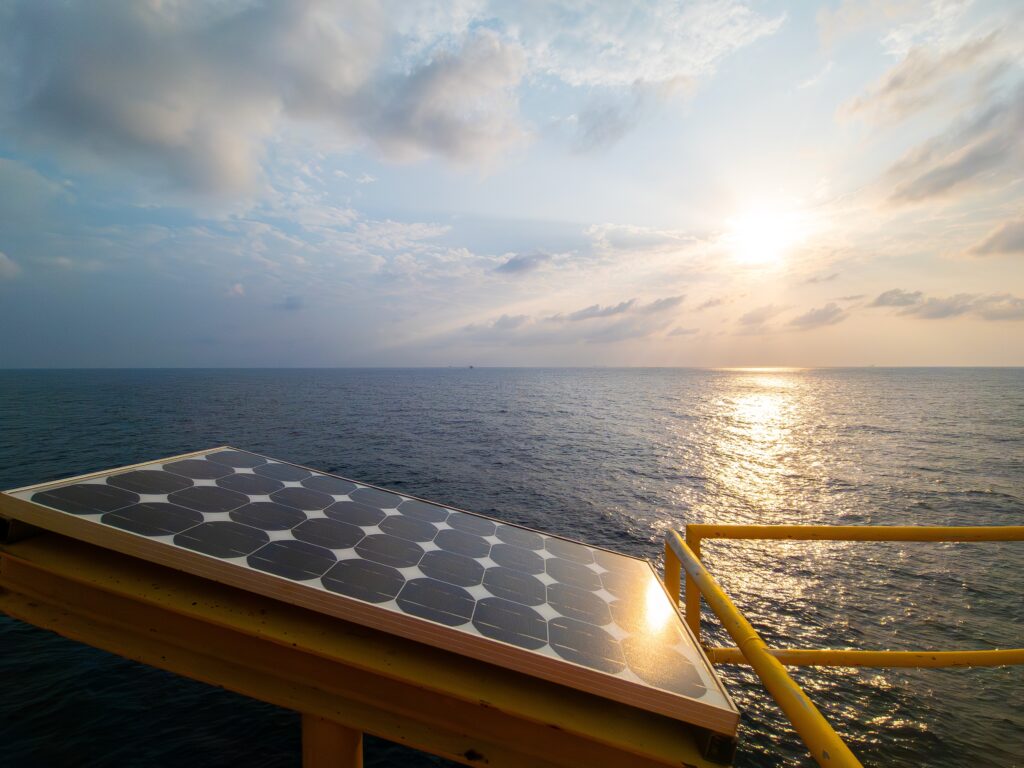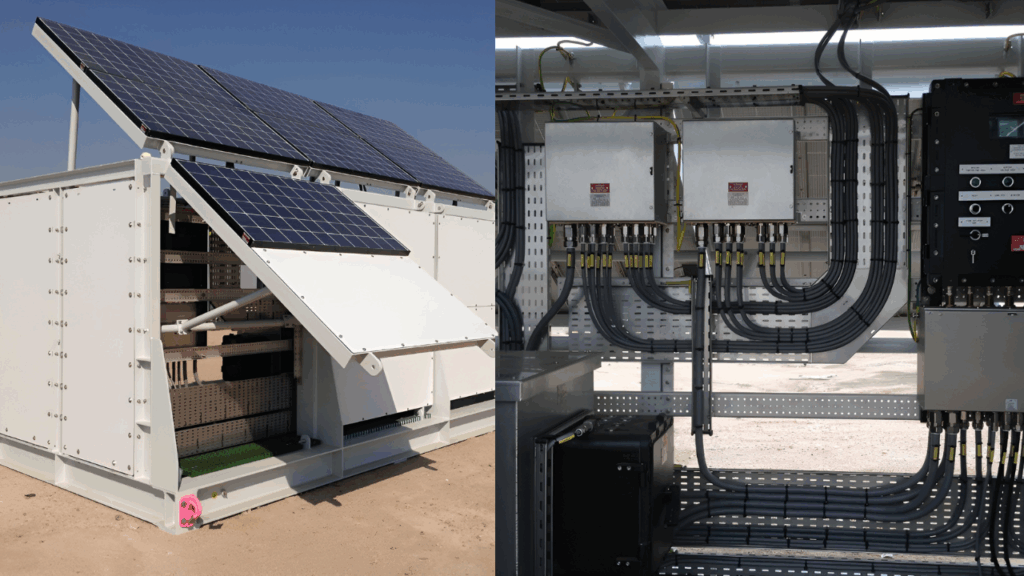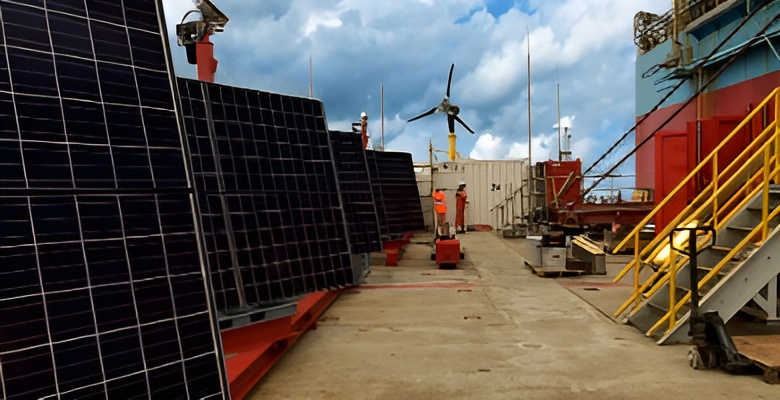
JCE Celebrates Innovation Award Win at Northern Star Business Awards
PRESS RELEASE JCE Energy Ltd., a specialist in off-grid power solutions for hazardous areas, has been awarded the prestigious Inspiration…
When it comes to powering operations in hazardous environments, safety is non-negotiable. Explosive atmospheres—those that contain flammable gases, vapours, or mist—are particularly dangerous, and it is in these conditions that ATEX and IECEx -certified solar panels are designed to thrive. These specialised solar panels are engineered to prevent becoming a source of ignition, offering reliable energy solutions in industries like oil & gas, petrochemicals, mining, and offshore platforms.
In this blog, we’ll explore what ATEX and IECEx certified solar panels are, why they are so crucial for hazardous environments, and the specific certifications and safety features that make them different from standard photovoltaic panels. If you’re seeking to understand how to integrate solar power in potentially explosive environments, this guide will provide the insights you need.
What Are ATEX and IECEx Solar Panels?
ATEX and IECEx solar panels are photovoltaic panels certified for use in areas where explosive atmospheres may be present. These hazardous environments, defined under the ATEX (European) directive and IECEx (International) standards, can occur in locations where flammable substances like gases, vapours, or dust are present. Both certifications ensure that the panels meet strict safety standards to prevent ignition in these volatile conditions. Commonly, these hazardous areas are classified as Zone 1 (where the risk of explosion is frequent) or Zone 2 (where the risk is intermittent). For Zone 1, Category 2G equipment is suitable, while Category 3G equipment is appropriate for Zone 2. ATEX and IECEx certifications are critical in industries such as oil & gas and chemical processing, providing assurance that solar panels can safely operate in high-risk environments globally.
| Certification Type | Zone 1 (where risk of explosion is frequent) | Zone 2 (where the risk is intermittent) |
| ATEX | Category 2G | Category 3G |
| IECEx | EPL Gb | EPL Gc |
The ATEX directive, from which European Union member regulations originate, sets strict essential health and safety requirements for equipment used in such environments. For a solar panel to be ATEX-certified, it must meet these high standards, ensuring it does not ignite potentially explosive atmospheres during operation. As a result, ATEX solar panels are favoured in industries in the EU and the UK where safety is paramount, particularly in areas like offshore oil rigs, refineries, chemical plants, and remote monitoring stations.
The IECEx certification, an internationally recognised standard, ensures that equipment used in explosive environments meets stringent safety requirements on a global scale. For a solar panel to be IECEx-certified, it must adhere to rigorous testing and assessment procedures designed to prevent the ignition of explosive gases, vapours, or dusts. This certification is particularly valuable for industries operating outside the European Union, offering assurance that equipment is safe for use in hazardous areas across various regions. IECEx-certified solar panels are highly sought after in sectors like oil & gas, mining, chemical processing, and remote energy systems, where operational safety in explosive atmospheres is critical.


Why Are Certifications Important?
One of the defining characteristics of ATEX Category 2G solar panels is their certification. Two primary certifications ensure the safety and suitability of solar panels for explosive atmospheres: ATEX and IECEx.
For companies like JCE, which manufactures the SPA series of ATEX and IECEx-certified solar panels, compliance with both certification systems allows their products to be used across industries worldwide, particularly in challenging environments such as offshore oil & gas installations and chemical processing plants.
Key Features of ATEX and IECEx Solar Panels
What makes ATEX and IECEx solar panels distinct from standard solar panels is that they have been tested and comply to additional standards.
Let’s look at the key aspects that ensure these panels perform safely and efficiently in hazardous environments:
This means that for items protected by encapsulation (Ex m), there is no contact between hot or sparking parts and the explosive atmosphere. For items protected by increased safety (Ex e) the design prevents sparks or hot surfaces.

Applications of ATEX Solar Panels
The versatility and safety of ATEX and IECExsolar panels make them suitable for a wide range of applications in hazardous environments. Here are some of the most common uses:
For example, JCE’s SPA series of ATEX and IECEx-certified solar panels is widely used in offshore oil & gas installations and hazardous industrial sites. These panels are not only explosion-proof but also designed to withstand extreme environmental conditions, ensuring a reliable power source where conventional solutions would be both dangerous and uneconomical.
How ATEX Solar Panels Differ from Standard Panels
While the core function of ATEX and IECEx solar panels is similar to that of standard photovoltaic panels—capturing sunlight and converting it into energy—there are some key differences that make them suitable for hazardous areas.
In hazardous areas, these additional safety measures are critical, ensuring that solar panels do not inadvertently become a source of danger.

Installation and Maintenance of ATEX and IECEx Solar Panels
ATEX and IECExsolar panels require special installation procedures to ensure compliance with safety standards. Qualified personnel familiar with hazardous area classifications must carry out the installation, and any associated equipment—such as batteries and inverters installed in a Zone 1 hazardous area—must also be Ex-certified to ensure overall system safety.
Once installed, ATEX and IECExpanels typically require low maintenance. Their rugged design means they can endure harsh conditions without the need for frequent upkeep. Regular safety checks and annual inspections are recommended, but their overall resilience makes them a reliable choice for long-term, low-maintenance power generation.
Conclusion
ATEX and IECEx solar panels are a vital part of the renewable energy landscape in hazardous environments. Their specialised design ensure they can safely provide power in areas where explosive atmospheres are intermittent or frequent risk.
Whether you’re looking to power a remote monitoring station, an offshore oil rig, or a hazardous industrial site, ATEX and IECEx-certified solar panels offer a robust, reliable, and safe energy solution. Companies like JCE exemplify this technology with their SPA series panels, which are widely used across industries for their durability, safety, and efficiency.
By understanding the key features and certifications of ATEX and IECEx solar panels, you’ll be better equipped to make informed decisions about integrating solar power into hazardous environments, ensuring safety and efficiency every step of the way.
Ready to take the next step? Contact us for expert advice on finding the right solar panel solution for your hazardous environment, or explore JCE Group’s SPA Series of ATEX and IECEx -Certified Solar Panels to see how we can help power your operations safely and reliably.

Supplying a bespoke solar power system for the South Ndola wellhead platform to support safe, reliable offshore energy.

Creating a Zone 2 certified solar power system to deliver safe, sustainable energy in hazardous offshore environments.

Developing a containerised hybrid power system to support critical operations with lower emissions and improved fuel efficiency.